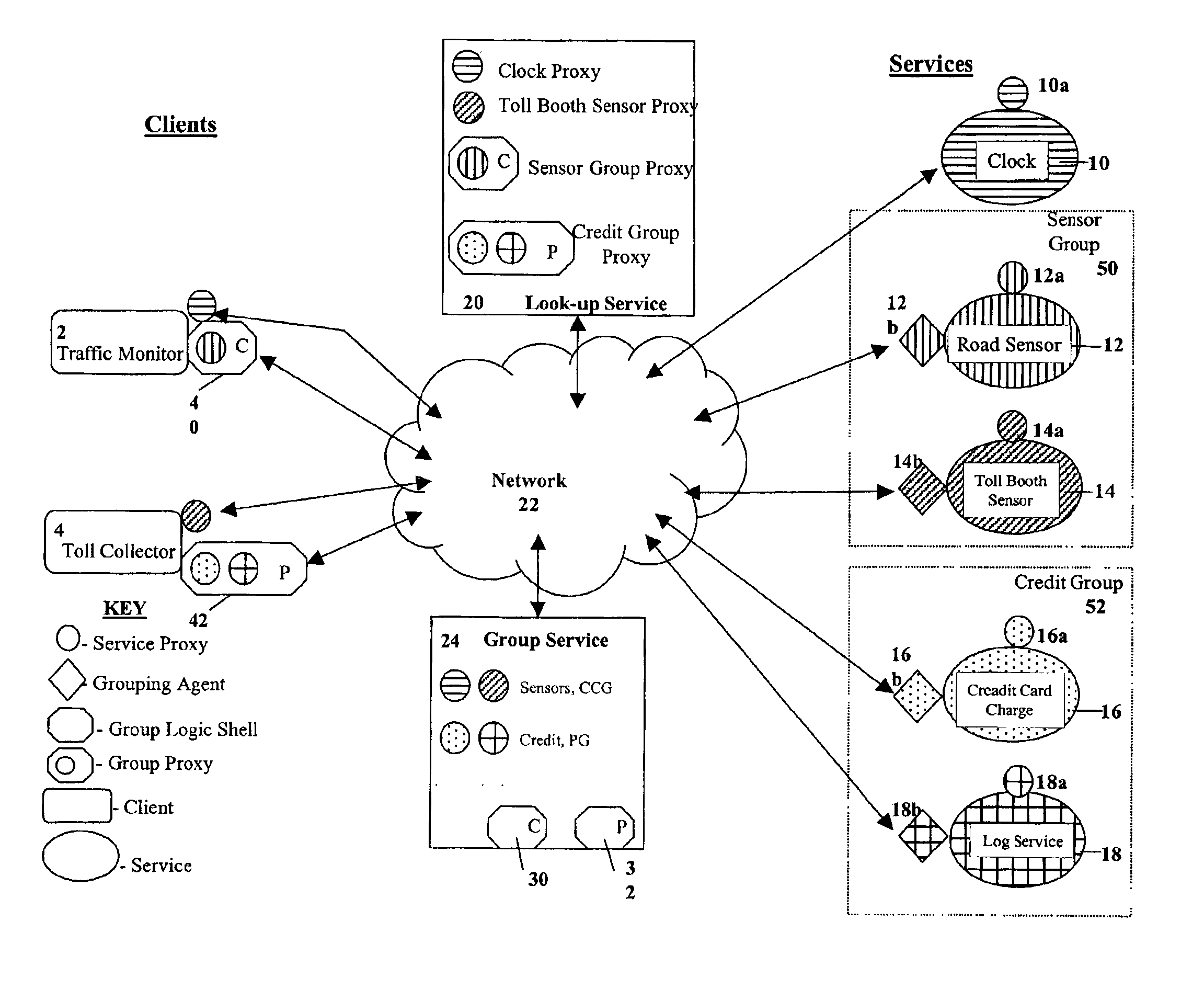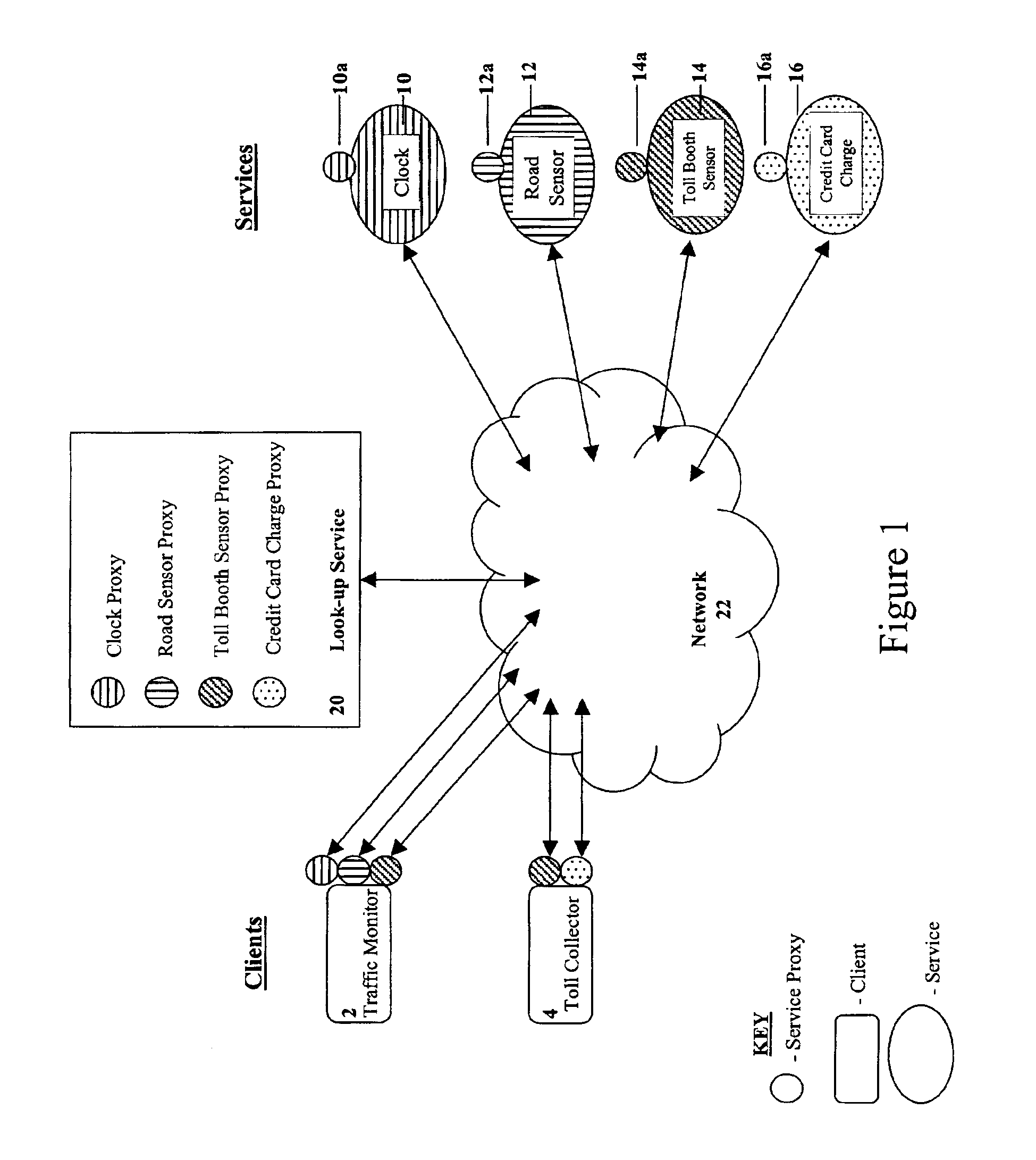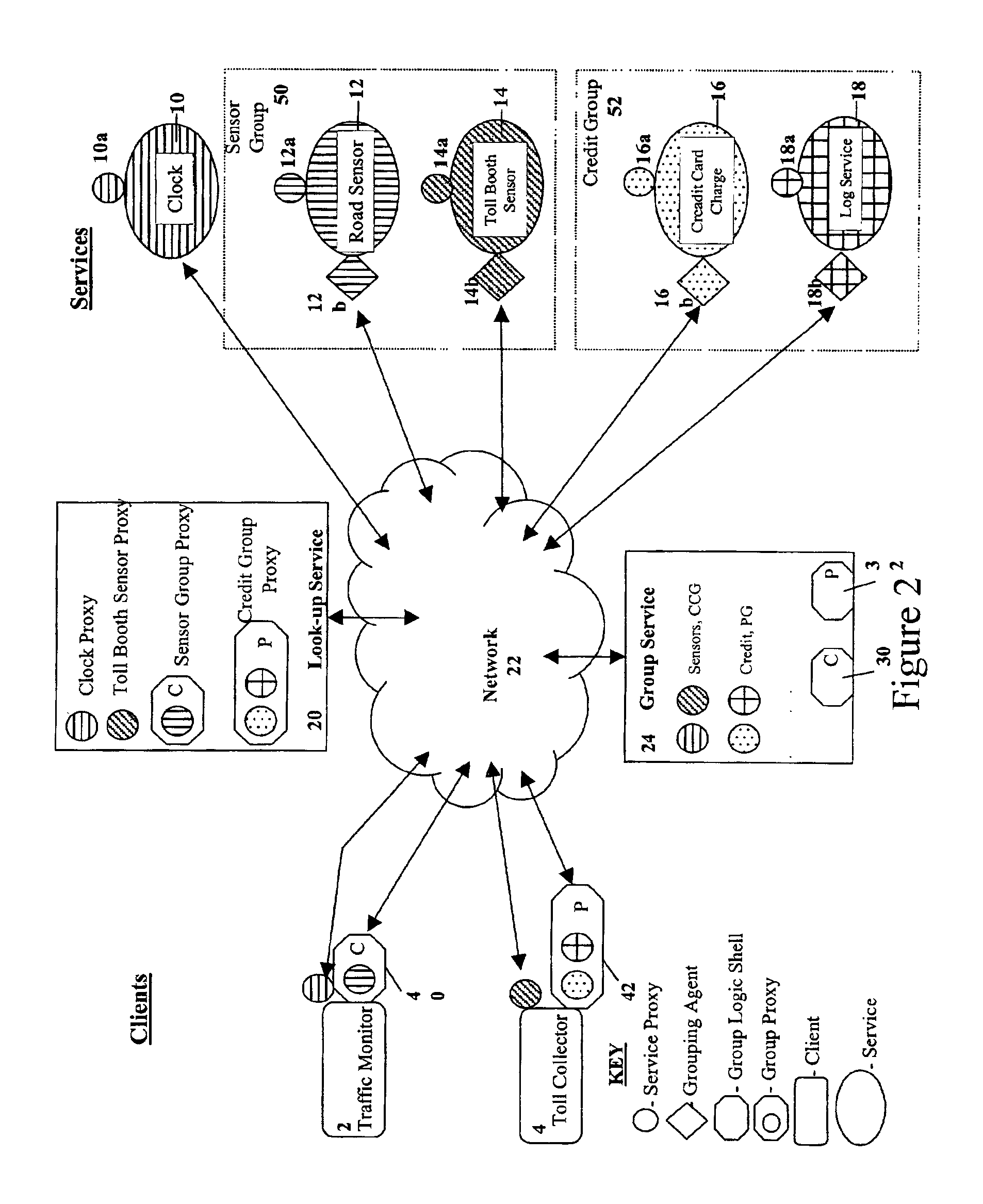Method for handling transitions in grouped services in a distributed computing application
a distributed computing and service technology, applied in the direction of program control, multi-programming arrangements, instruments, etc., can solve the problems of requiring additional computational capacity and communication bandwidth, unable to move the same pre-compiled program from one platform to another during its execution, and requiring more frequent updates. to achieve the effect of reducing the number of clients and services, maintaining the purity of look-up services and other infrastructure services
- Summary
- Abstract
- Description
- Claims
- Application Information
AI Technical Summary
Benefits of technology
Problems solved by technology
Method used
Image
Examples
Embodiment Construction
[0040]This invention is related to the invention described in the previously filed U.S. patent application, Ser. No. 09 / 028,026, still pending, Group Proxy and Method for Grouping Services in a Distributed Computing Application, filed on Aug. 10, 2001, which is hereby incorporated by reference.
[0041]FIG. 2 shows an example of a distributed computing application of the current invention. As in FIG. 1 there is a communication network 22, a look-up service 20, a number of clients 2, 4, and a number of services 10, 12, 14, 16, 18, each of the latter having a service proxy 10a, 12a, 14a, 16a, 18a. In the current invention some of the services are grouped. In this example one group of services is a CC group 50 and the other group is a peer group 52. To support the group activity each grouped service is provided with a grouping agent 10b, 12b, 14b, 16b, 18b and there is a group service 24. In addition to there being proxies for each service there are also group proxies 40, 42, which act as...
PUM
 Login to View More
Login to View More Abstract
Description
Claims
Application Information
 Login to View More
Login to View More - R&D
- Intellectual Property
- Life Sciences
- Materials
- Tech Scout
- Unparalleled Data Quality
- Higher Quality Content
- 60% Fewer Hallucinations
Browse by: Latest US Patents, China's latest patents, Technical Efficacy Thesaurus, Application Domain, Technology Topic, Popular Technical Reports.
© 2025 PatSnap. All rights reserved.Legal|Privacy policy|Modern Slavery Act Transparency Statement|Sitemap|About US| Contact US: help@patsnap.com



